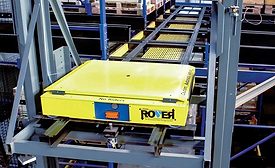Wayne Labs
Wayne Labs has more than 30 years of editorial experience in industrial automation. He served as senior technical editor for I&CS/Control Solutions magazine for 18 years where he covered software, control system hardware and sensors/transmitters. Labs ran his own consulting business and contributed feature articles to Electronic Design, Control, Control Design, Industrial Networking and Food Engineering magazines. Before joining Food Engineering, he served as a senior technical editor for Omega Engineering Inc. Labs also worked in wireless systems and served as a field engineer for GE’s Mobile Communications Division and as a systems engineer for Bucks County Emergency Services. In addition to writing technical feature articles, Wayne covers FE’s Engineering R&D section.
Senior Contributing Technical Editor
ARTICLES
Manufacturing News
Extending the applications of Blockchain in the food manufacturing industry
April 15, 2019
Waste management
Last miles to zero waste: Packaged food waste recycling
Food companies generate packaged waste, but what are the options for dealing with it?
April 9, 2019
IIoT
How IIoT can improve food and beverage bottom lines
IIoT can pave the way for better scrutiny of processes, tracking food safety and operating efficiencies
April 9, 2019
Automation
Flexibility is key for automated pallet movement in cold storage facilities
Automated storage and retrieval systems have emerged as highly desirable solutions for refrigerated and deep-freeze warehouses
April 8, 2019
Industry News
Seven companies form IIoT alliance
The concept is to create an open ecosystem for the digital transformation of industrial plants
April 3, 2019
Industry News
Pilgrim’s Pride names Jayson Penn CEO
Former CEO Bill Lovette will retire after eight years leading the company
March 25, 2019
Engineering R&D
Electrical connectors must survive harsh requirements, meet stringent standards
March 22, 2019
Elevate your expertise in food engineering with unparalleled insights and connections.
Get the latest industry updates tailored your way.
JOIN TODAY!Copyright ©2024. All Rights Reserved BNP Media.
Design, CMS, Hosting & Web Development :: ePublishing










